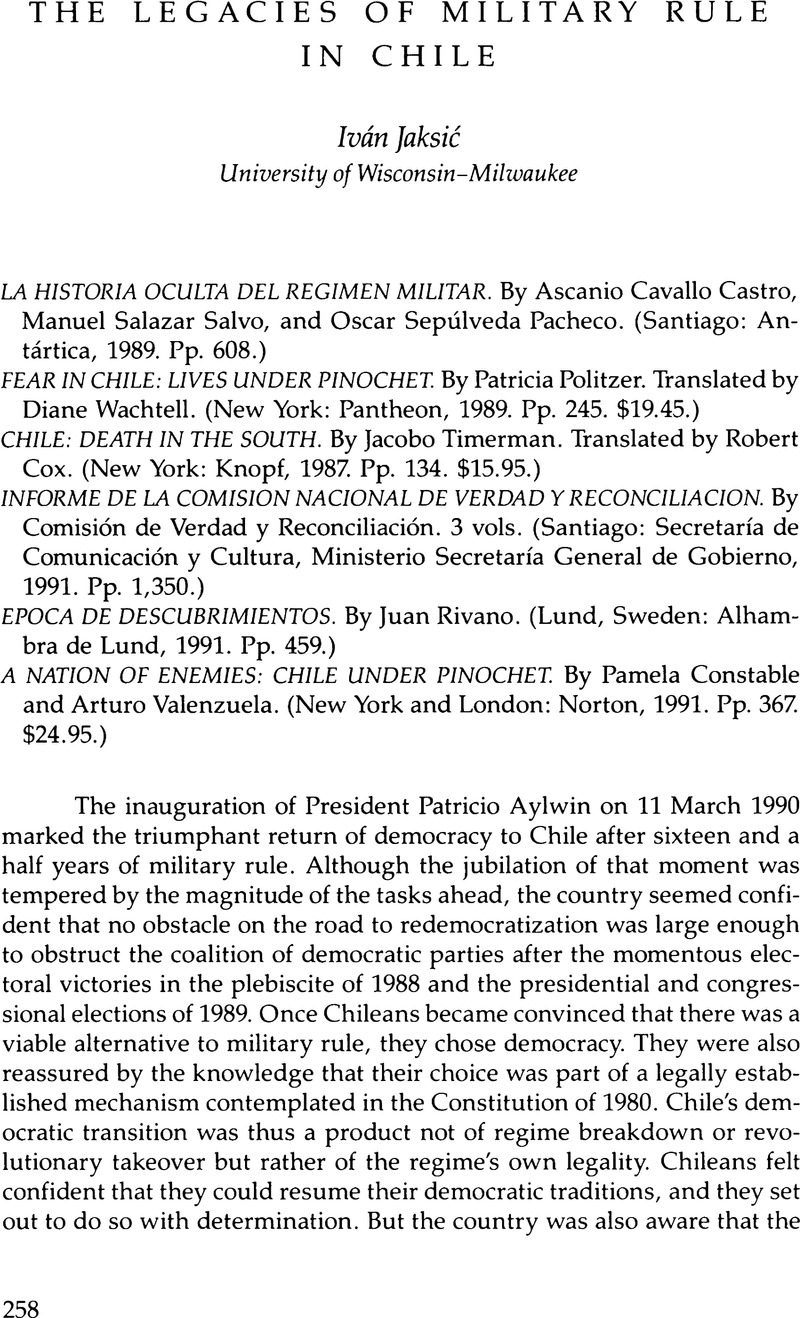Published online by Cambridge University Press: 12 October 2022

1. A large body of literature on the politics of the Chilean transition continues to grow. Examples include Manuel Antonio Garretón, The Chilean Political Process, translated by Sharon Kellum (Boston: Unwin Hyman, 1989); Garretón, “The Political Evolution of the Military Regime and Problems in the Transition to Democracy,” in Transitions from Authoritarian Rule: Latin America (Baltimore, Md.: Johns Hopkins University Press, 1986), 95–122; From Dictatorship to Democracy: Rebuilding Political Consensus in Chile, edited by Joseph S. Tulchin and Antonio Varas (Boulder, Colo.: Lynne Reinner, 1991); Alan Angelí and Benny Pollack, “The Chilean Elections of 1989 and the Politics of the Transition to Democracy,” Bulletin of Latin American Research 9, no. 1 (1990):1–23; Brian E. Loveman, “¿Misión cumplida? Civil-Military Relations and the Chilean Political Transition,” Journal of Interamerican Studies and World Affairs 33, no. 3 (Fall 1991):35–74; Loveman, “Democracy on a Tether,” Hemisphere 2, no. 2 (Winter 1990):24–28; Pamela Constable and Arturo Valenzuela, “Chiles Return to Democracy,” Foreign Affairs 65, no. 5 (Winter 1989–90):169–86; Paul W. Drake and Arturo Valenzuela, “The Chilean Plebiscite: A First Step toward Redemocratization,” LASA Forum 19, no. 4 (Winter 1989):18–36; and The Struggle for Democracy in Chile, 1982–1990, edited by Paul W. Drake and Iván Jaksić (Lincoln: University of Nebraska Press, 1991). See also Eduardo Silva, “Chile Past, Present, and Future: The Long Road to National Reconciliation,” Journal of Interamerican Studies and World Affairs 33, no. 4 (Winter 1991):133–46; and Timothy R. Scully, Rethinking the Center: Party Politics in Nineteenth- and Twentieth-Century Chile (Stanford, Cal.: Stanford University Press, 1992), esp. 186–202.
2. This figure includes 132 members of the military and police who died in armed confrontations (6 percent of the total).
3. After receiving copies of the Informe, the Aylwin administration set up the Corporación Nacional de Reparación y Reconciliación on 9 Feb. 1992 to determine levels of compensation for relatives of victims. Some seven thousand relatives became eligible for health and education benefits and a monetary compensation of approximately four hundred dollars.